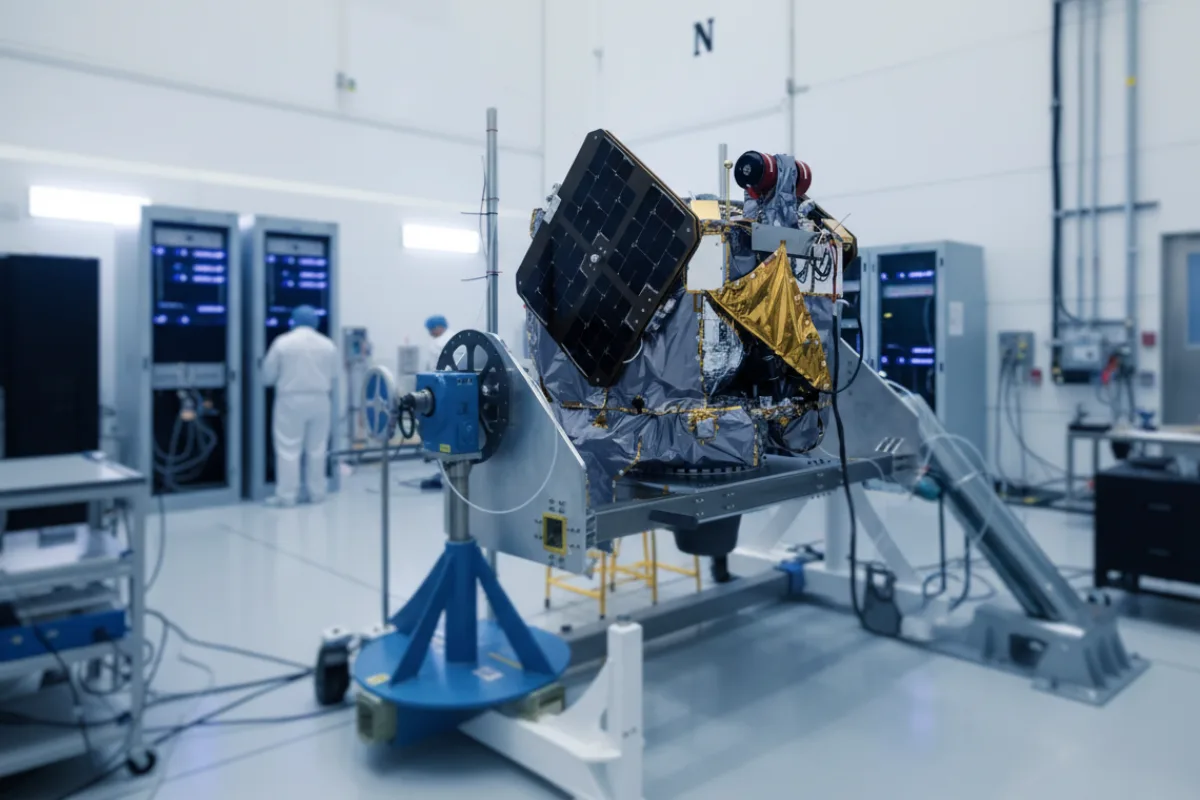Introduction
NASA and Blue Origin are preparing to launch ESCAPADE — two small satellites built to study how the solar wind affects Mars’ magnetosphere and atmosphere — on Blue Origin’s New Glenn rocket. The mission is targeted for mid-October and media accreditation is open as the spacecraft arrive at Cape Canaveral for final processing.
ESCAPADE (Escape and Plasma Acceleration and Dynamics Explorers) comprises twin probes that will orbit Mars and measure charged particles and fields to reveal how solar storms strip atmosphere and influence space weather — vital science for understanding planetary habitability and atmospheric loss.
[related url=”https://tekznology.com/apples-secret-test-app-shows-siri-overhaul-moving/”]
Mission details and schedule
- Launch vehicle: New Glenn’s second flight will carry ESCAPADE from Cape Canaveral; Blue Origin and NASA confirmed the collaboration and opened media accreditation ahead of the launch window. Timing targets are mid-October but can shift with range or technical checks.
- Science goals: The probes will perform coordinated observations, mapping how solar particles and fields interact with Mars’ upper atmosphere — data that complements orbiters and ground missions to build a fuller picture of atmospheric escape.
[related url=”https://tekznology.com/ai-vibe-coding-anthropics-claude-sonnet-4-5/”]
Why ESCAPADE matters

ESCAPADE is both a science mission and a milestone for commercial heavy-lift: it’s the first interplanetary payload scheduled for New Glenn’s second flight, showcasing a public–private model where NASA buys launch services from NewSpace providers. The mission’s data will feed models of Mars’ climate evolution and help plan future human and robotic exploration.
[related url=”https://tekznology.com/south-korea-export-ai-chip-demand-lifts-shipments/”]
Watchpoints and risks
- Launch timing: New Glenn must complete preflight checks; schedule slips are common in interplanetary missions.
- Communications and navigation: As smallsats, ESCAPADE probes depend on precise navigation and reliable communications during cruise and orbital insertion — both are mission risks to monitor.
[related url=”https://tekznology.com/samsungs-galaxy-z-tri-fold-phone-nears-debut/”]
Author note: I used NASA’s mission blog and independent space-coverage outlets to outline mission goals and schedule, focusing on what the science will teach us about Mars and the role of commercial launchers.

